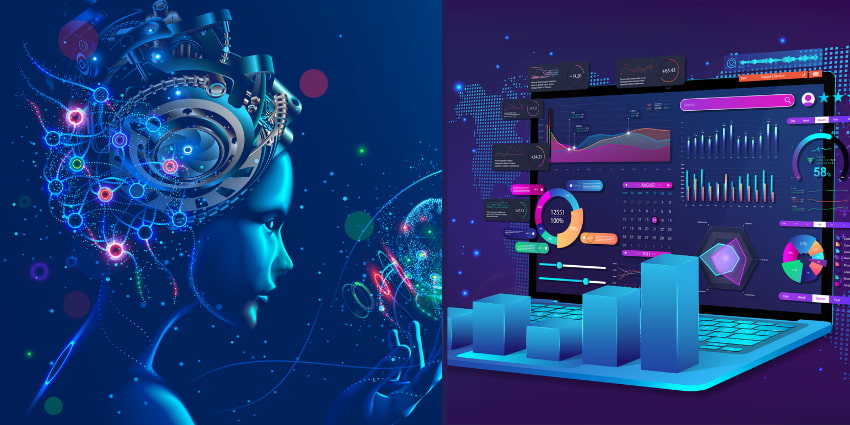As enterprises produce more data than ever before, there is massive value to be generated from effective data-driven decision-making. Companies that have successfully become data-powered earn 70% more per employee, according to Capgemini. If you’re looking to adopt data-driven decision-making in 2021, there are two key concerts to remember – business intelligence (BI) and business analytics (BA).
While both are essentially geared to help make smarter decisions, there are a few key differences.
Business intelligence vs. Business Analytics
Business intelligence can be defined as a set of tools, technologies, and strategies used to study and analyse business information to facilitate better decisions. BI projects have a substantial lead time. Business analytics can be defined as a technology that allows the investigation of past events to enable better planning and more effective decisions in the immediate future.
The global business intelligence market was valued at $23.1 billion in 2020, slated to cross $33 billion by 2025. Analytics occupies a larger market, valued at $53.68 billion in 2019 and scheduled to be worth $120.27 billion by 2027 due to its more widespread applications, fewer barriers to entry for SMBs, and relatively lesser skill requirements.
5 Key Differences Between BI and BA
- The type of analytics in use
While there is definitely an overlap between the techniques and statistical algorithms used by BI and BA, the former primarily deals with descriptive analytics while the latter focuses on prescriptive analytics. This means business intelligence tries to assess past events, while business analytics is meant to predict the future and generate recommendations.
- The skill levels involved
Business intelligence tools are typically more skill-intensive than analytics. If you consider business analytics to be the simplest and most user-friendly (possible to operate without any technical expertise) and data science to be the most technical, BI sits somewhere between the two. It requires some data literacy and familiarity with data manipulation techniques, along with a strong business understanding.
- The outcome deliverable after the analysis process
The outcome deliverable for BI is almost always a report – data scientists and business analysts use BI tools to generate reports as per pre-built or custom templates, often scheduling their generation through automation. Analytics, on the other hand, tries to arrive at an actionable insight and recommendation for the future. The outcome for BA, therefore, is an actionable answer to a highly specific business problem.
- The software tools necessary
Here’s where BI and BA truly diverge. Business intelligence requires sophisticated tools like SAS, tableau, TIBCO, Looker, etc. that can integrate with varied sources of high-volume raw data. Business analytics relies on embedded analytical capabilities and industry-specific platforms that work on a limited dataset.
- The ultimate objective
The ultimate objective of business intelligence is to learn more about an operation’s surrounding context – market conditions, user behaviour, product success, etc. Business analytics is meant to answer short to mid-term operational challenges, informed by events and data from the recent past to predict the future.







